Adjusting Visual Effects to Improve PC Speed
Mark Baggesen is a former Lifewire writer who has 20+ years' experience and has in web development, communications, web analytics, and databases.
Updated on December 02, 2020
- The Ultimate Laptop Buying Guide
With Windows Vista, Microsoft introduced the Aero Glass theme that, for its time, gave Vista PCs a sleek new look. Aero continued to influence Windows 7, and elements of Aero are still in Windows 8, 8.1, and 10, despite Microsoft opting for a flatter look over the transparent style of Windows Vista and 7.
If your computer isn’t powerful enough, Aero’s various effects adversely affect performance. But, like all things Windows, Microsoft offers a way for you to cut down on the effects and adjust them to your heart’s content.
This guide applies to Windows 10.
How to Adjust Visual Effects on Your Windows Computer
To reduce the number of effects Windows utilizes:
Type "performance" into the search box on the taskbar and select Adjust the appearance and performance of Windows.
:max_bytes(150000):strip_icc()/001-adjusting-visual-effects-to-improve-pc-speed-08d6120cb2604ec3b1a6db2e155ed14c.jpg)
Under the Visual Effects tab, select Adjust for best performance.
:max_bytes(150000):strip_icc()/002-adjusting-visual-effects-to-improve-pc-speed-8a896dc532fd438585bb07f9f1c6b7e4.jpg)
Select Apply, then select OK.
:max_bytes(150000):strip_icc()/003-adjusting-visual-effects-to-improve-pc-speed-f80f49057efb46a28fcd103923ecdc5b.jpg)
Restart your computer.
Benefit of Adjusting Visual Effects
Reducing the performance load of visual effects can result in speed increases for your computer, especially if it's an older model.
At the top of the Performance Options window, pick from four choices that effectively let Windows automate your Aero settings:
- Let Windows choose what's best for my computer: This is the default setting.
- Adjust for best appearance: If you choose this setting all effects will be used. This setting requires the most amount of operating memory.
- Adjust for best performance: Most effects will not be used. This setting requires the least amount of operating memory of the three automated options.
- Custom: This setting lets you choose the settings you want.
What to Do After Adjusting Visual Effects
The list of effects is pretty straightforward and should be easily understandable for most users. A few items you should consider unchecking right away are Save taskbar thumbnail, Show shadows under thumbnail, and Show shadows under windows.
If you're really having problems with performance, though, consider getting rid of most of the animation effects such as Animate controls and elements inside windows. Translucency effects also prove resource-intensive.
20 tips and tricks to increase PC performance on Windows 10
Does your computer feel sluggish? If so, use these tips to help speed up and increase the performance of Windows 10.
23 Jan 2021 16

Source: Windows Central
Although Windows 10 is a fast system (especially on modern hardware), at some point, the performance will start degrading as a result of many factors, including compatibility issues and bugs, viruses or other types of malware, hardware problems, and more.
If you notice that your device is getting slower, it does not necessarily mean you have to replace it immediately. A few simple software and hardware tweaks can significantly speed up the Windows 10 experience.
In this Windows 10 guide, we’ll walk you through 20 ways you can try to speed up, optimize, and improve the performance of your computer – whether it has an older or modern hardware configuration.
1. Restart device
Although it might be obvious, it’s not the first thing that comes to everyone’s mind, but shutting down and restarting your device is among the first things on the list you want to do to improve the overall experience.
When you shut down or restart, the system will close all the running applications and processes. And the data stored in memory will be cleared, which should help resolve the most common performance issues caused by keeping the operating system running for a long time.
To shut down and restart the device, use these steps:
Select the Shut down option.
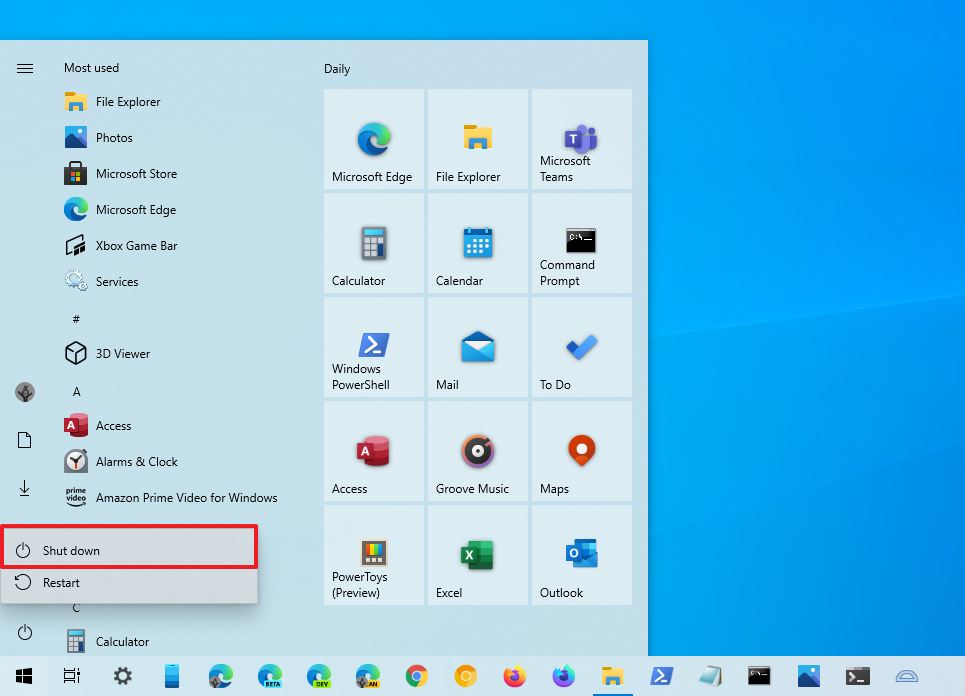
Source: Windows Central
Quick tip: The «Sleep» or «Hibernate» options do not reset the system session or clear the data in memory.
After you complete the steps, Windows 10 will start again, and this time the performance should improve.
2. Disable startup apps
Many applications can configure themselves to start automatically during startup and continue to run in the background, wasting valuable system resources that can significantly slow down the experience.
If you want to speed up Windows 10, you should disable all these applications running at startup or those you do not use regularly.
To disable apps at startup on Windows 10, use these steps:
Turn off the toggle switch for any unnecessary app (especially those marked as «High impact» by the system).

Source: Windows Central
Once you complete the steps, the device should now start faster than before. Of course, the improvement gain will vary depending on the apps you disabled and hardware configuration.
3. Disable apps relaunch on startup
Windows 10 has a feature that can restart the apps from your last session after a reboot even before you sign in. Although this is a useful feature that can speed up the process to resume where you left off quickly, it can also impact the system performance.
If the app re-launch at startup is enabled, you can disable it with these steps:
Under the «Restart apps» section, turn off the toggle switch.
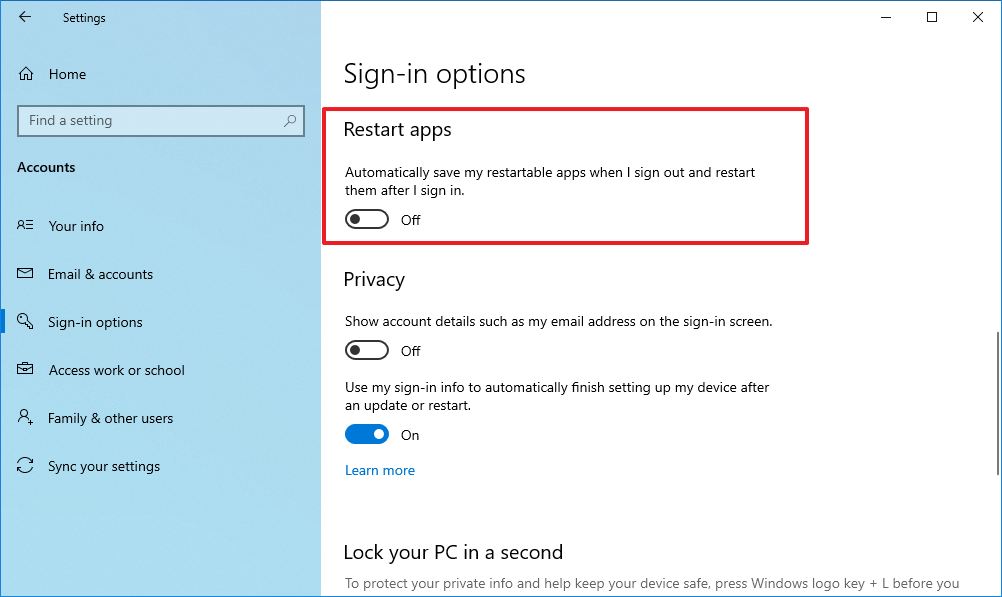
Source: Windows Central
After you complete the steps, the apps you are using won’t reopen during the next restart speeding up the overall system performance.
4. Disable background apps
On Windows 10, certain applications can continue to run tasks in the background even when using them. If you want to speed up your device as much as possible, you can decide which apps can operate in the background or disable the feature to block all apps.
To stop apps from running in the background, use these steps:
Turn off the toggle switch for the apps you want to stop running in the background.
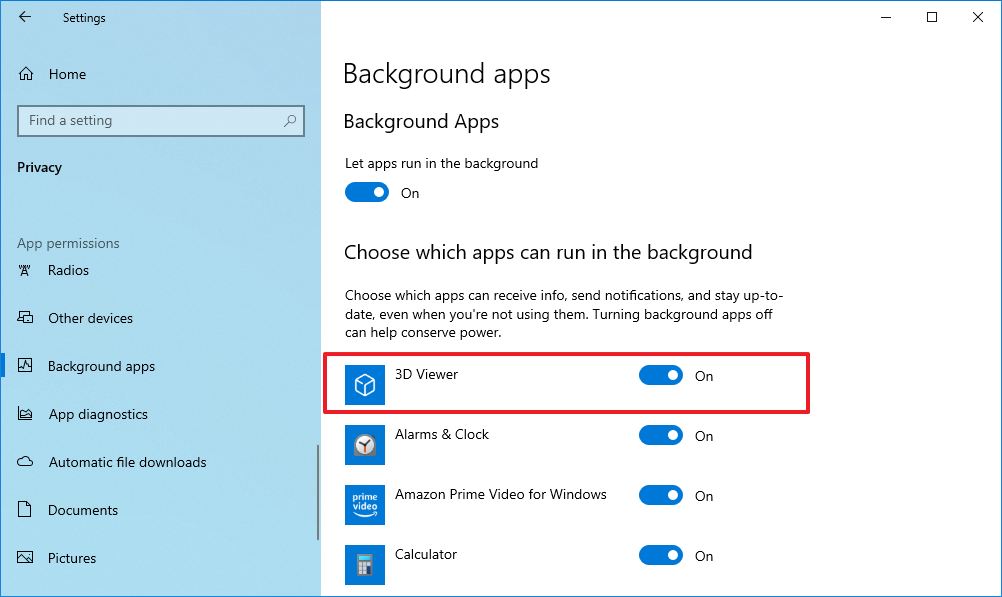
Source: Windows Central
Once you complete the steps, apps will not waste any more resources when you do not actively use them to increase system performance.
The option is only available for Microsoft Store apps. If you have some traditional desktop apps that run in the background, you will need to change the application settings.
5. Uninstall non-essential apps
Usually, new devices come bundled with many applications you do not need, including the usual bloatware and system tools you will never use and will only waste space on the hard drive and resources. When you are trying to increase the system performance, you should always remove those non-essential applications.
To uninstall non-essential apps on Windows 10, use these steps:
- Open Settings.
- Click on Apps.
- Click on Apps & features.
- Select the app to remove.
Click the Uninstall button.
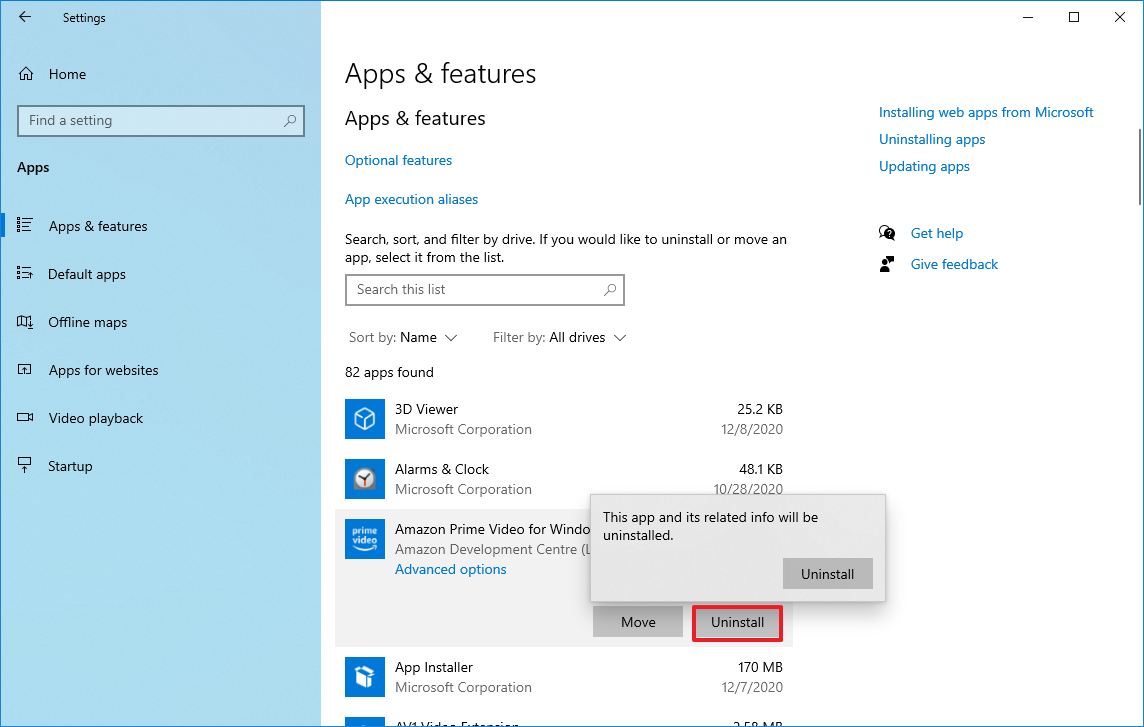
Source: Windows Central
After you complete the steps, you may need to repeat the instructions to uninstall other non-essential apps from the device.
6. Install quality apps only
Here is a well-known piece of advice. Old and poorly designed apps and apps that load unnecessary features can negatively affect performance. Also, just because an app comes from a known company does not mean it’s a good app.
If you want to keep your device in a good healthy and snappy, only install good apps. Typically, you want to install apps available from the Microsoft Store, which have been checked for security and performance. If the app is not available through the store, only download apps from trusted sources and confirm they were designed for Windows 10.
If you are not sure, you can research online to get more information about the app. For example, you can check the software vendor’s forums to check whether users are experiencing issues or post a question in the forums to find out more details.
To install apps from the Microsoft Store, use these steps:
- Open Microsoft Store.
- Use the searh box from the top-right corner to find the app.
Select the app from the result.
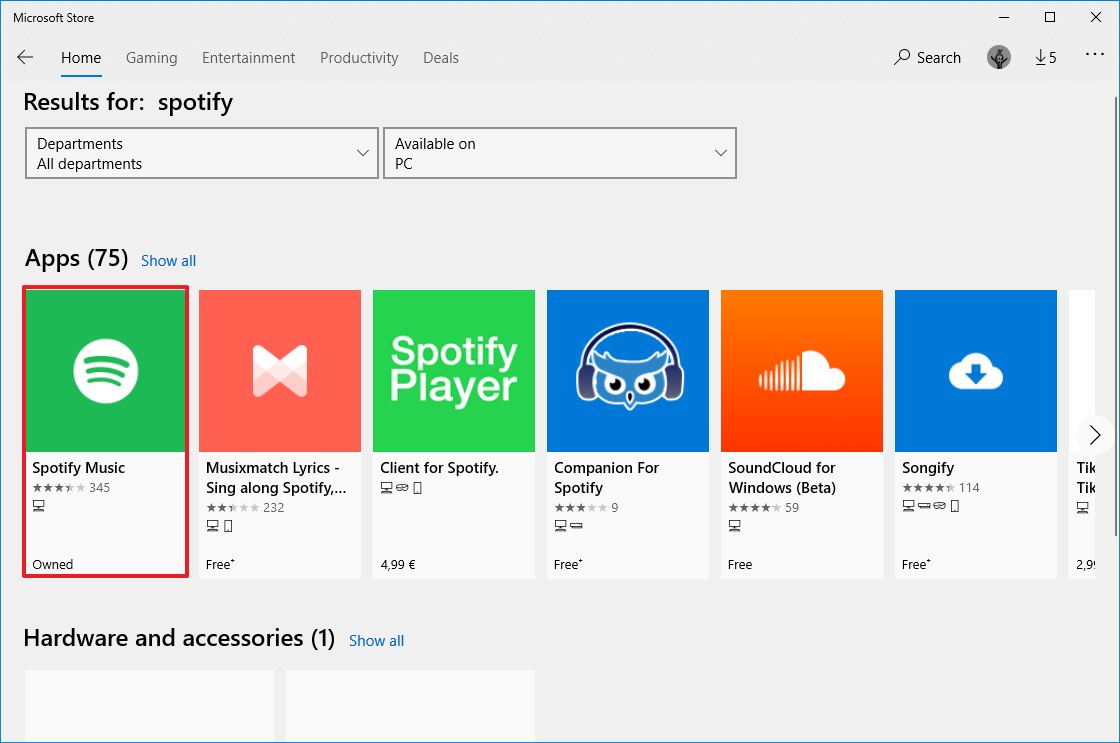
Source: Windows Central
Click the Get or Install button.
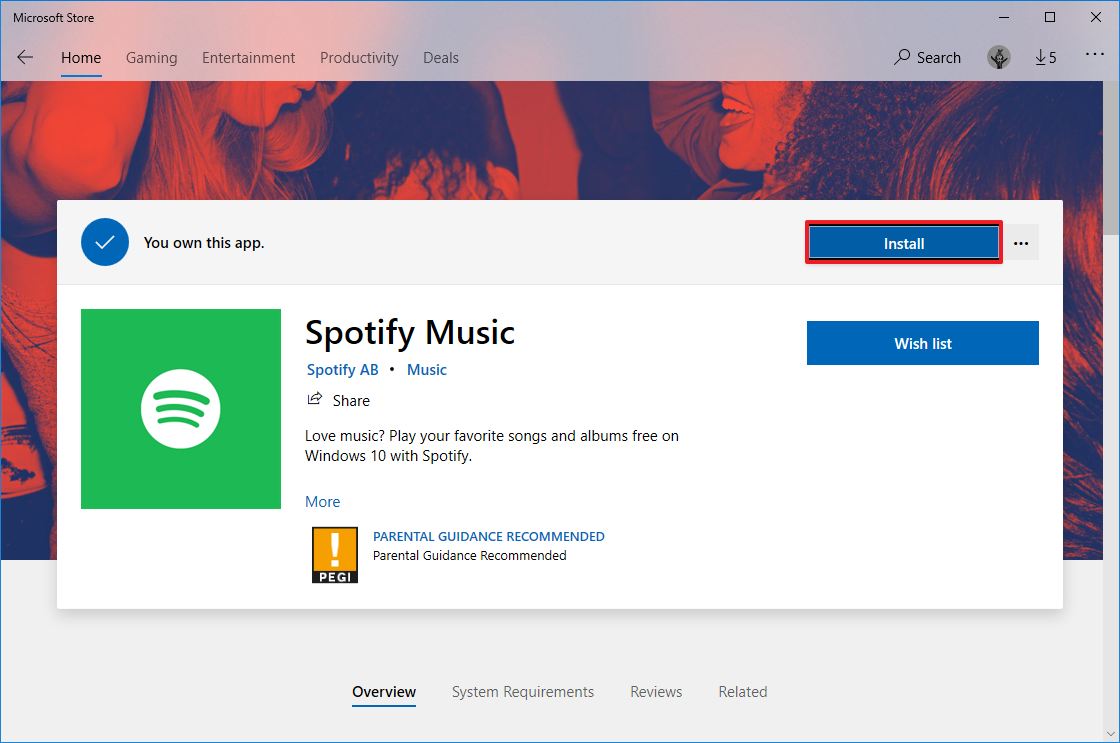
Source: Windows Central
Once you complete the steps, the app will install on your computer. If the app is not available in the Microsoft Store, then download the installer from the trusted source, and follow the vendor support website step to install and configure the program.
7. Clean up hard drive space
Whether it is a traditional Disk Hard Drive (HDD) or Solid-State Drive (SSD), it’s never wise to use a device with the hard drive almost full because it will affect performance.
If the device has relatively new hardware and you notice apps, managing files, and other tasks are struggling to complete, it is likely because the drive is running out of space. Typically, this becomes more evident after 70 percent of the total capacity has been used.
One way to prevent the storage from impacting performance is to use Storage Sense to delete temporary and unnecessary files to reclaim space.
To free up space with Storage Sense on Windows 10, use these steps:
Under the «Local Disk» section, click the Temporary files option. (If you do not see the option, click the Show more categories option to view the remaining items in the list.)
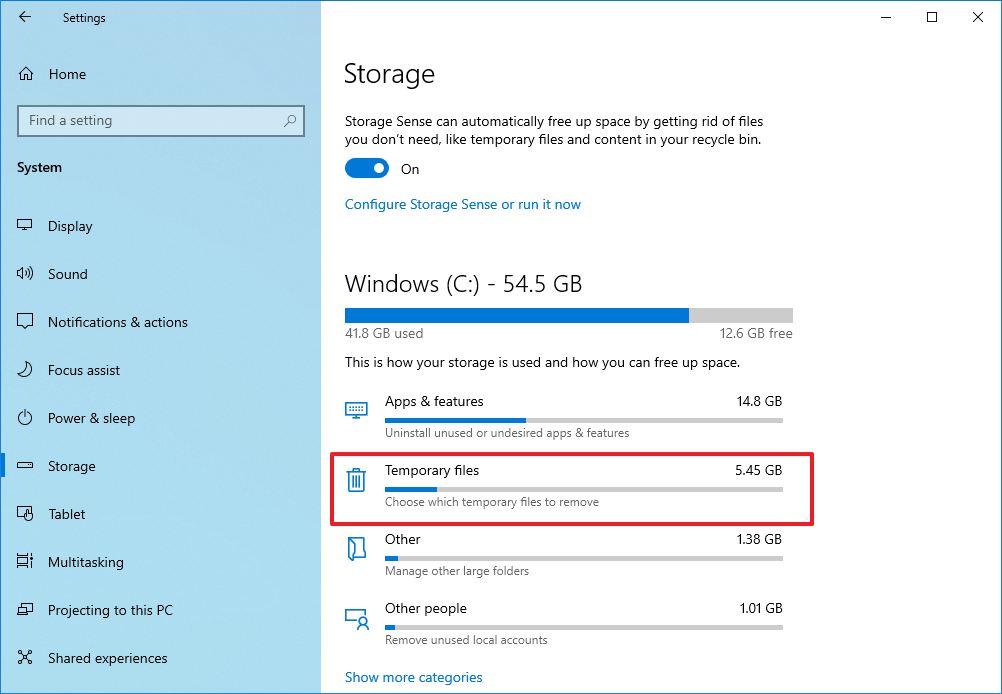
Source: Windows Central
Check the files you want to delete to reclaim space and improve system performance.
Quick tip: When selecting the temporary files, remember that checking the Downloads option will delete everything inside the «Downloads» folder. If you want to keep these files, do not check this option. Also, you can select to delete the «Previous Windows Installation(s)» item (if applicable). However, once you delete these files, you won’t be able to roll back to a previous version if you are having issues.
Click the Remove files button.

Source: Windows Central
Once you complete the steps, if Storage Sense could reclaim enough space, the device’s performance should be noticeably improved.
In addition to using Storage Sense, you can use also OneDrive Files On-demand feature to free up space. You can use these instructions to set up Files On-demand on your device.
If you could not reclaim enough space, use this guide to find more ways to optimize the storage.
8. Use drive defragmentation
If you have a device with older hardware with a traditional rotating platters hard drive, organizing the data can increase the machine’s responsiveness.
To run the defragmentation tool, use these steps:
Under the «More storage settings» section, click the Optimize Drives option.

Source: Windows Central
Click the Optimize button.
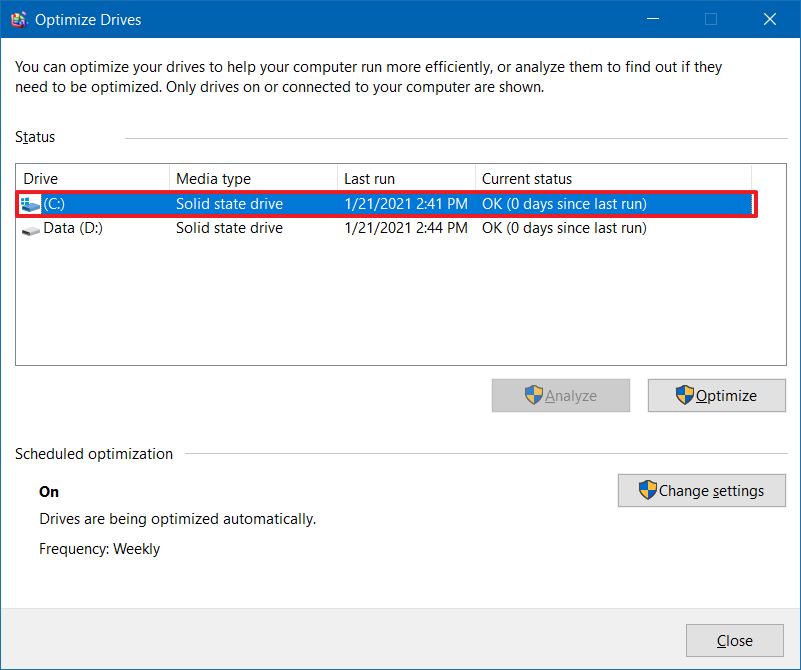
Source: Windows Central
After you complete the steps, the utility will rearrange the files to make them accessible more quickly the next time they are needed, translating into noticeable performance improvement. The only caveat is that the process can take a long time depending on the amount of data stored on the drive. (If you have an older system, it is best to leave the process running overnight.)
If you have a device with an SSD, using the defragmentation tool will run the trim command to inform the storage device of the blocks with data that can be safely erased. This process can significantly improve performance because the drive won’t have to erase the blocks during the writing data process.
9. Configure ReadyBoost
In addition, to use the defragmentation tool on devices with older hardware, you can also use the ReadyBoost feature to speed up your computer.
ReadyBoost is not new to Windows 10, it’s been around for many years, and it is a feature that uses a flash drive or SD card to cache files to boost the overall system performance. (If the device has an SSD, this feature won’t be available since it is unlikely to offer additional benefits.)
To enable ReadyBoost on Windows 10, connect a USB flash drive, and use these steps:
- Open File Explorer.
- Click on «This PC» from the left pane.
Under the «Devices and drives» section, right-click the USB flash drive and select the Properties option.
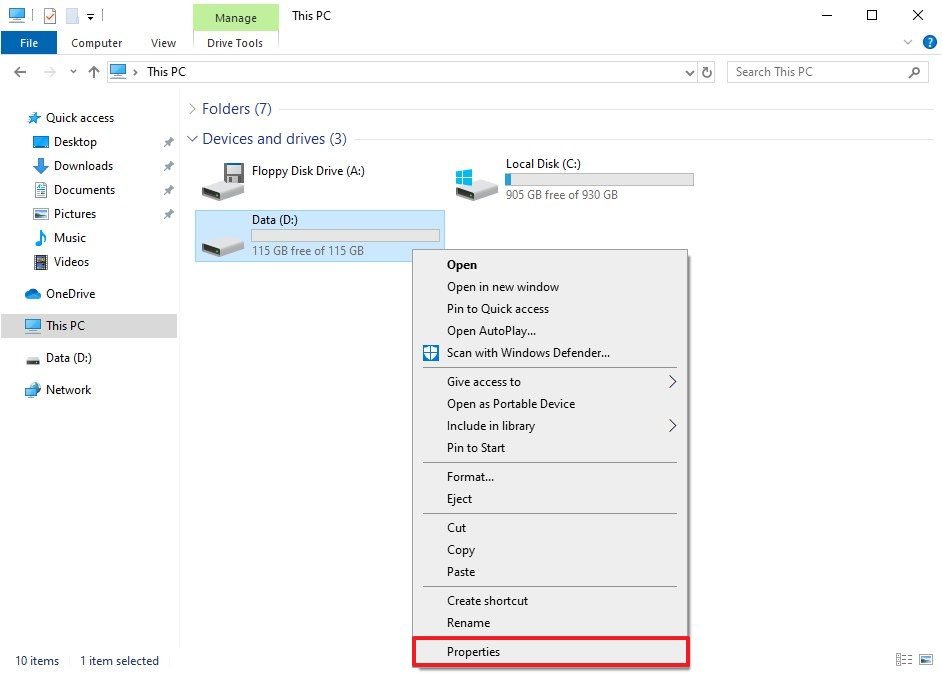
Source: Windows Central
Select the Dedicate this device to ReadyBoost option.

Source: Windows Central
Once you complete the steps, the removable drive should help to boost the performance of the computer.
If you need a USB flash drive to use with ReadyBoost, we recommend the SanDisk Extreme Go because of its storage capacity, reliability, and price.
Reliable storage

SanDisk Extreme Go
The SanDisk Extreme Go (CZ800) is an excellent choice to use with the ReadyBoost feature. The USB drive offers up to 128GB of storage with fast transfer speeds of up to 200MB/s, it’s backed by a strong brand, and it is affordable.
10. Perform malware scan
When a device starts to operate slow, this could be a sign of a malware infection. Usually, viruses, spyware, and other malware types are known to take up many system resources making a device unusable.
Although Windows 10 comes with Microsoft Defender Antivirus, it does not guarantee that malware will make its way into the system. If you suspect the computer has been infected, you should try running a full virus scan.
To run a full virus scan on Windows 10, use these steps:
- Open Start.
- Search for Windows Security and click the top result to open the app.
- Click on Virus & threat protection.
Under the «Virus & threat protection updates» section, click the Check for updates option.
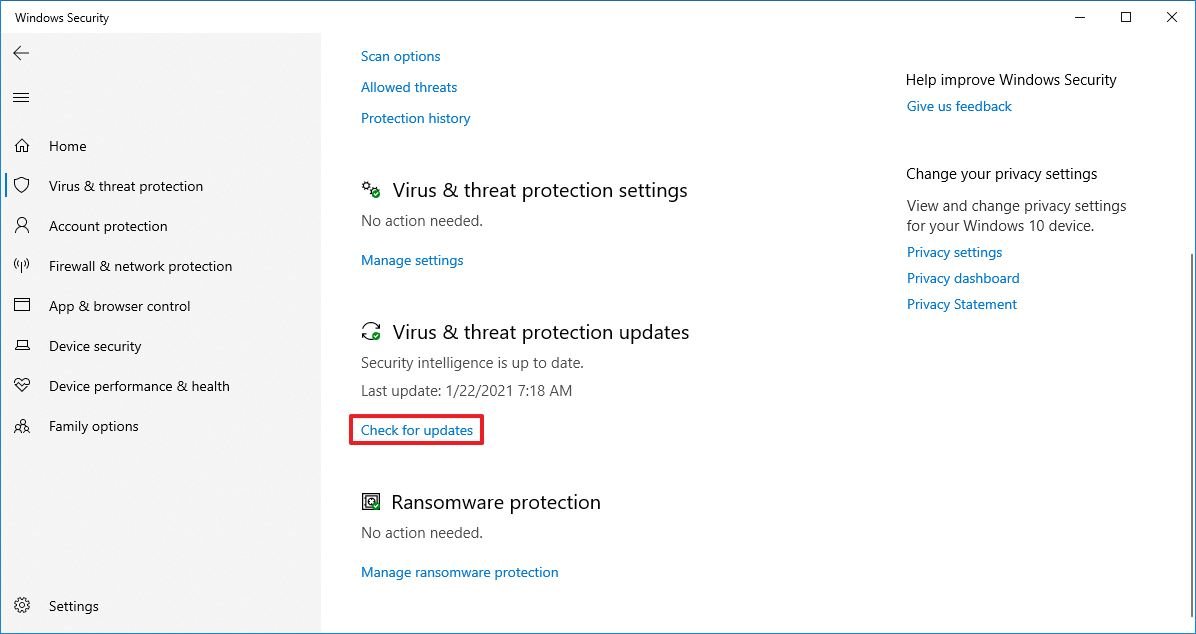
Source: Windows Central
Click the Check for updates button.
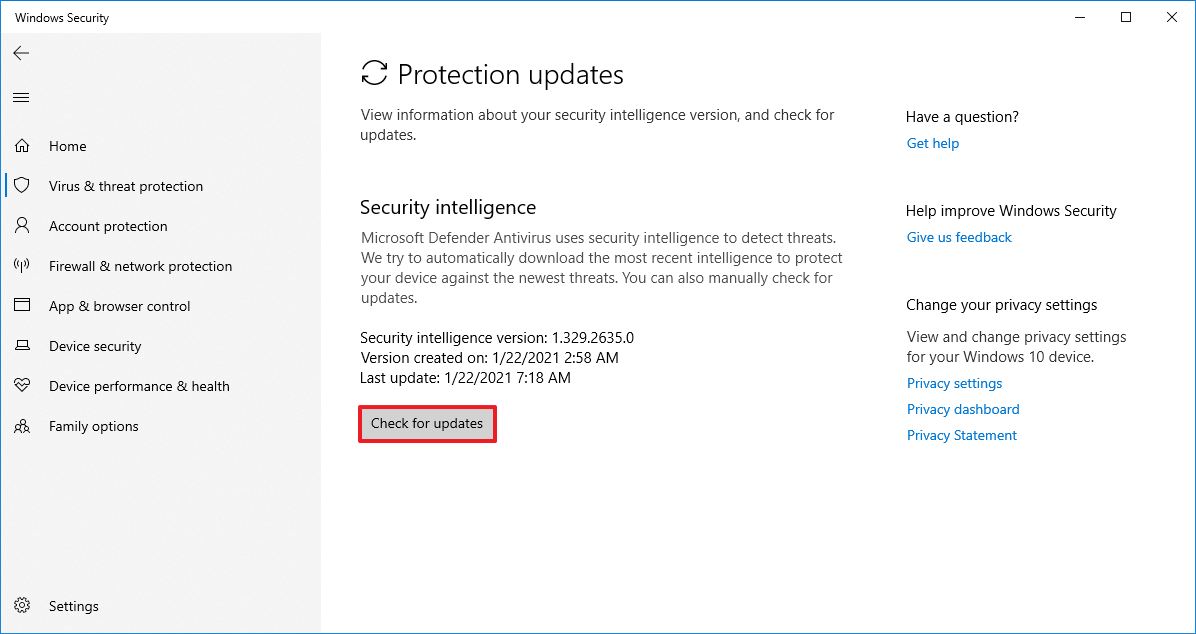
Source: Windows Central
Under the «Current threats» section, click the Scan options option.
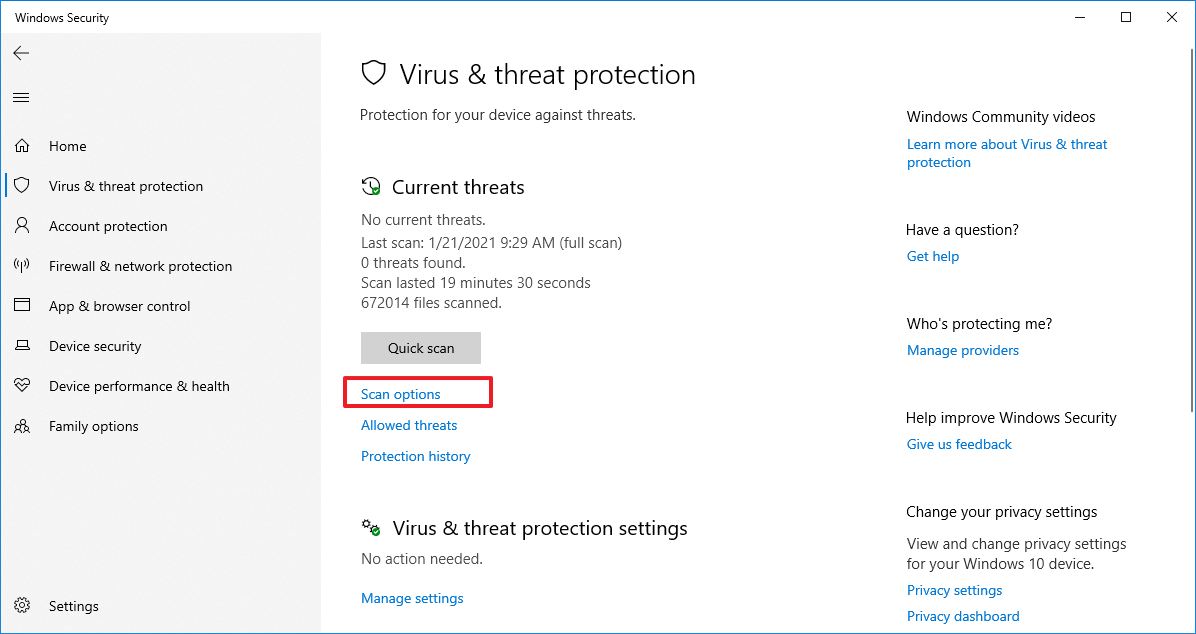
Source: Windows Central
Select the Full scan option.
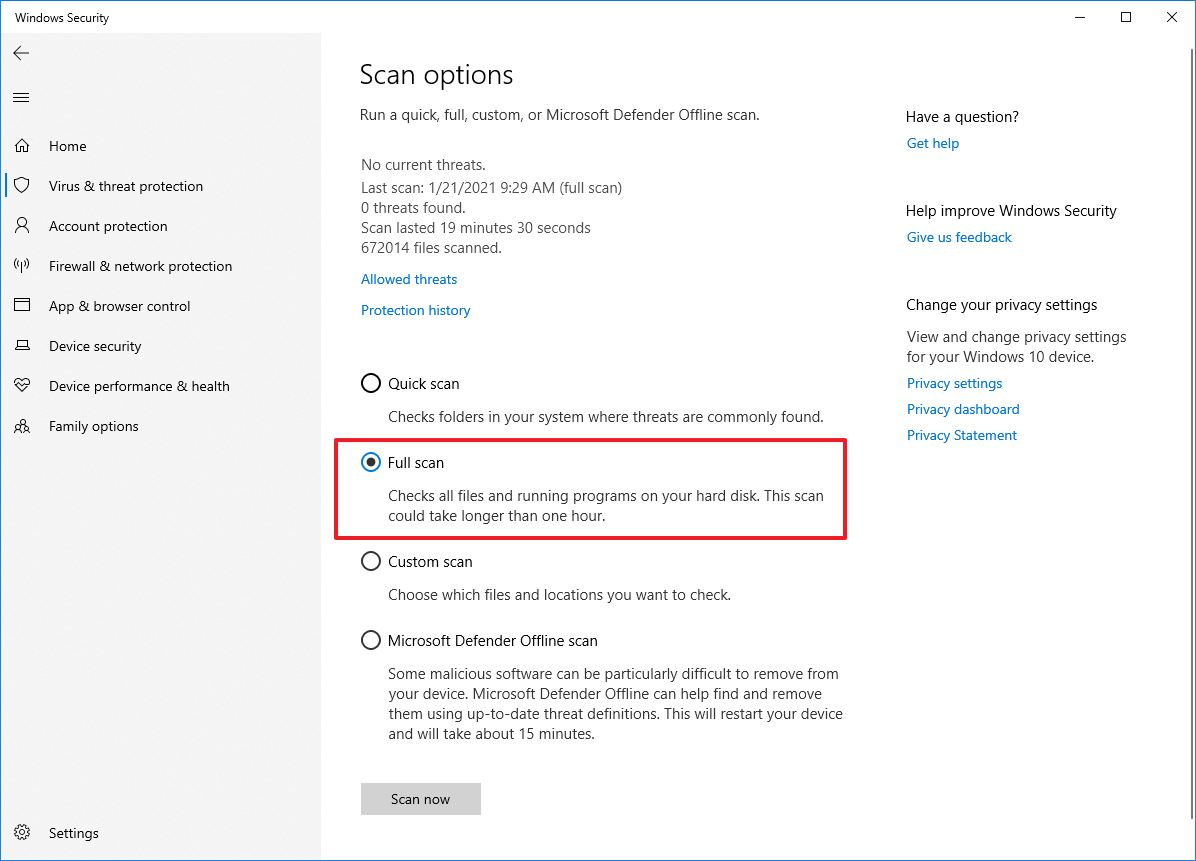
Source: Windows Central
After you complete the steps, Microsoft Defender Antivirus should detect and remove any malware impacting performance.
Microsoft Defender Offline scan
If you cannot use Microsoft Defender Antivirus because it’s not running, the definition does not update, or there are problems completing a scan, the device is likely infected with complex malware that cannot be removed while the OS is running. If this is the case, the antivirus includes an option to perform an offline scan.
To complete a Microsoft Defender Antivirus offline scan, use these steps:
- Open Start.
- Search for Windows Security and click the top result to open the app.
- Click on Virus & threat protection.
Under the «Current threats» section, click the Scan options option.

Source: Windows Central
Select the Microsoft Defender Offline scan option.
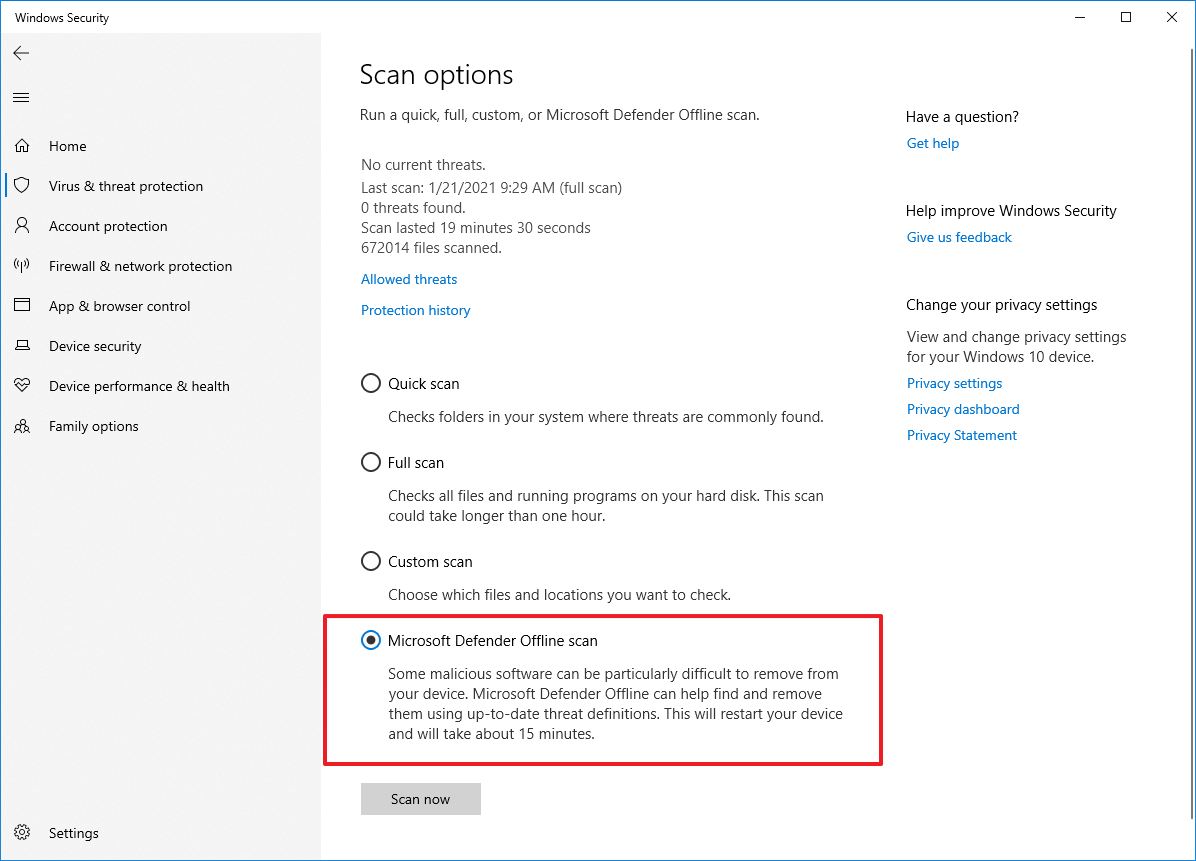
Source: Windows Central
Once you complete the steps, the system will restart automatically into the offline experience of Microsoft Defender, and it will perform a scan to detect and remove any threats that could not be removed while Windows 10 was running.
If you use other antimalware solutions like Malwarebytes, Bitdefender, Trend Micro, or Norton, check their support documentation to remove viruses and other malicious programs.
11. Install latest update
Microsoft is always proactively releasing updates to fix problems, add new features, and patch security vulnerabilities. While sometimes updates are the reason for things not working correctly, maintaining the update can speed up your computer.
Install cumulative updates
On Windows 10, updates happen automatically, but depending on the update or how the device is configured, they don’t always download and install as soon as they become available. If your computer is running slower than usual, it could be possible that an update is available to improve performance.
To install updates manually on Windows 10, use these steps:
- Open Settings.
- Click on Update & Security.
- Click on Windows Update.
Click the Check for updates button.
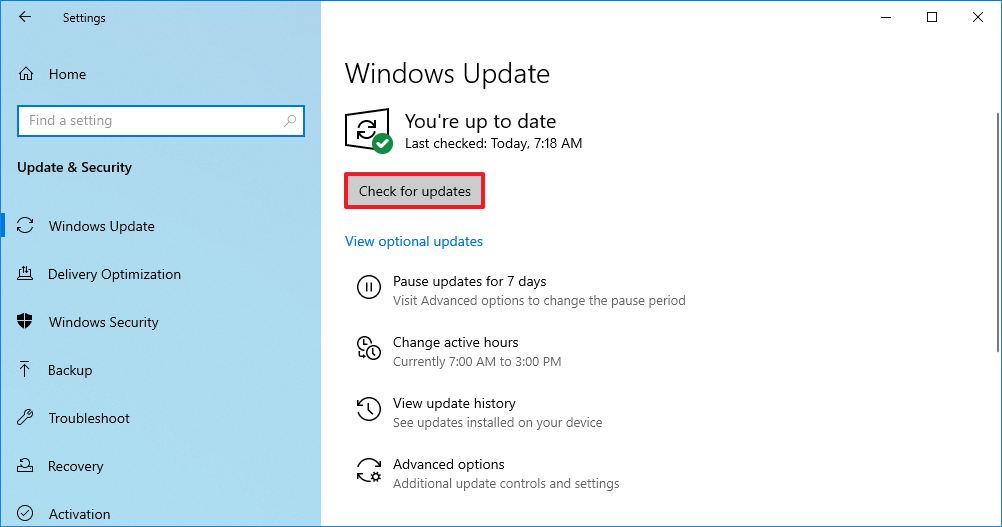
Source: Windows Central
After you complete the steps, the new update should help to improve system performance.
Upgrade to latest version
If the device has an older release of Windows 10, upgrading to the most recent version can speed up the performance or introduce new features that could make you more productive to get work done faster.
To bring a Windows 10 device to the most recent version, use these steps:
- Open Settings.
- Click on Update & Security.
- Click on Windows Update.
Click the Check for updates button.
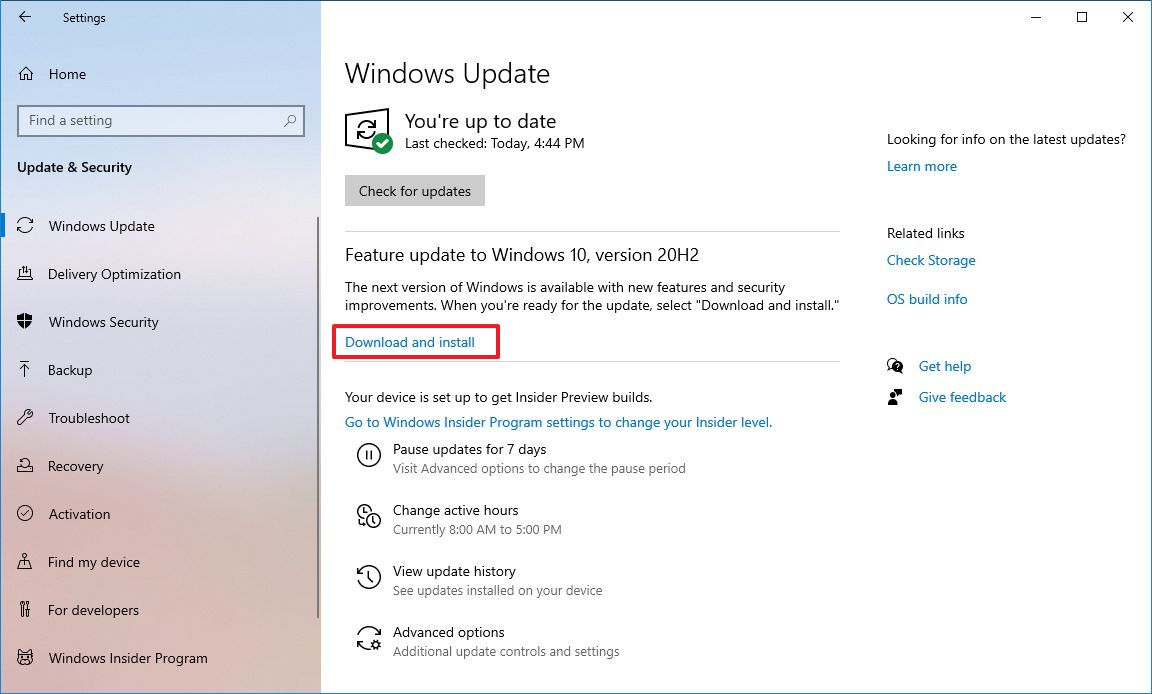
Source: Windows Central
Once you complete the steps, the computer will restart to apply the new version, improving the overall system performance.
Update device drivers
If your computer is running slow because of a compatibility issue or a poorly designed driver, you may be able to resolve the performance issue by downloading and installing the most stable or pre-release version of the driver available from the manufacturer support website manually.
Before proceeding, you need to download the latest available driver package from your device manufacturer website, uncompress the files using the self-extracting or .zip extension file, and then use these steps:
Quick note: Whenever possible, it is recommended to use the manufacturer support website instructions to complete this task. If instructions are not available, then you can refer to the steps below.
- Open Start.
- Search for Device Manager and click the top result to open the app.
- Expand the branch for the device driver causing problems. For example, Display adapters to update the video driver.
Right-click the device and select the Update driver option.

Source: Windows Central
Click the Browse my computer for driver software option.
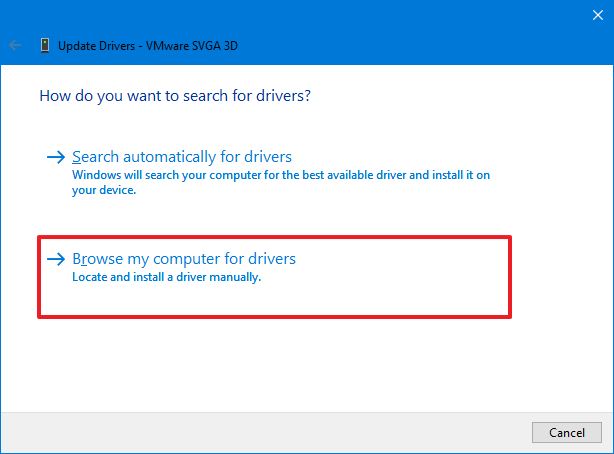
Source: Windows Central
Under the «Search for drivers in this location» section, click the Browse button.
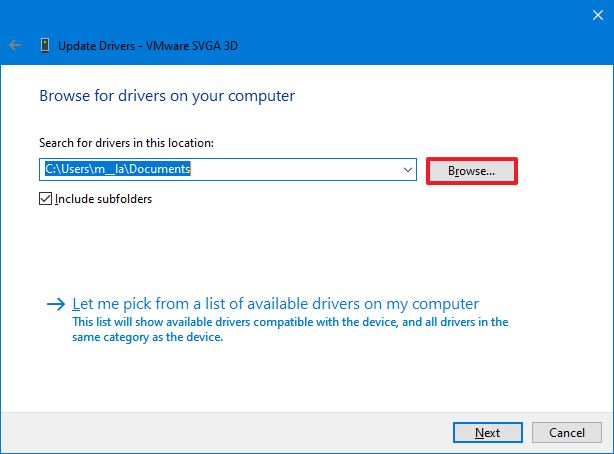
Source: Windows Central
After you complete the steps, the new version of the driver will install to address compatibility or any other issues impacting the system and boosting performance.
On Windows 10, there are multiple ways to update device drivers. If you need additional assistance, you can use this guide that outlines different methods to update a driver manually.
Update applications
Outdated apps can slow down a computer, and usually, this is due to bugs or compatibility problems with a new version of Windows 10.
While apps you install from the Microsoft Store can update automatically, many traditional desktop apps need to be updated manually. If you have an app causing performance problems, you should check your software support website for a newer update and the instructions to install it.
To update Microsoft Store apps manually, use these steps:
- Open Microsoft Store.
- Click the See more (ellipsis) button from the top-right corner.
Select the Downloads and updates option.
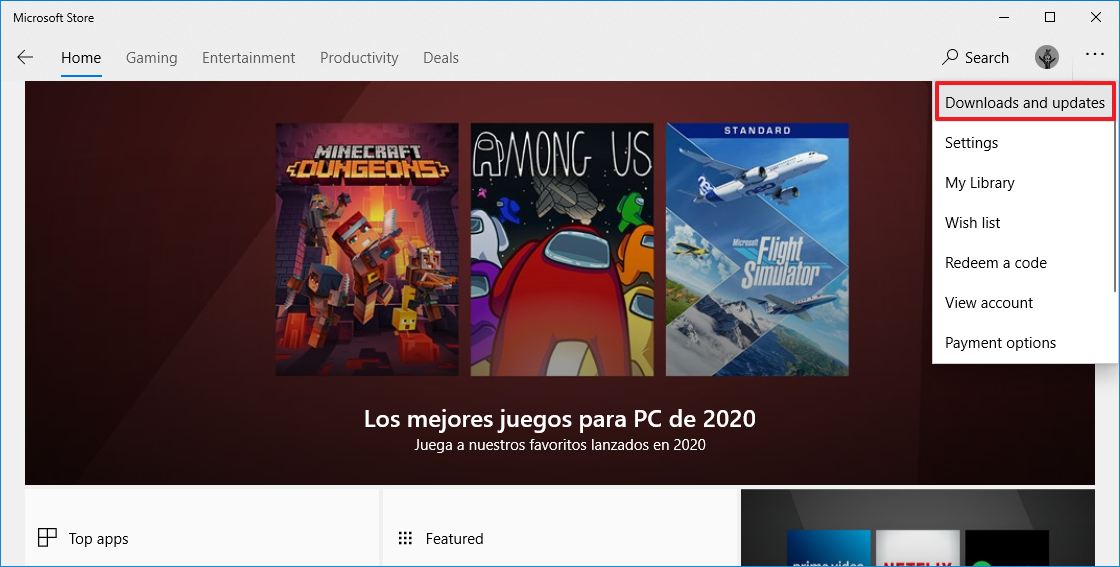
Source: Windows Central
Click the Update all option
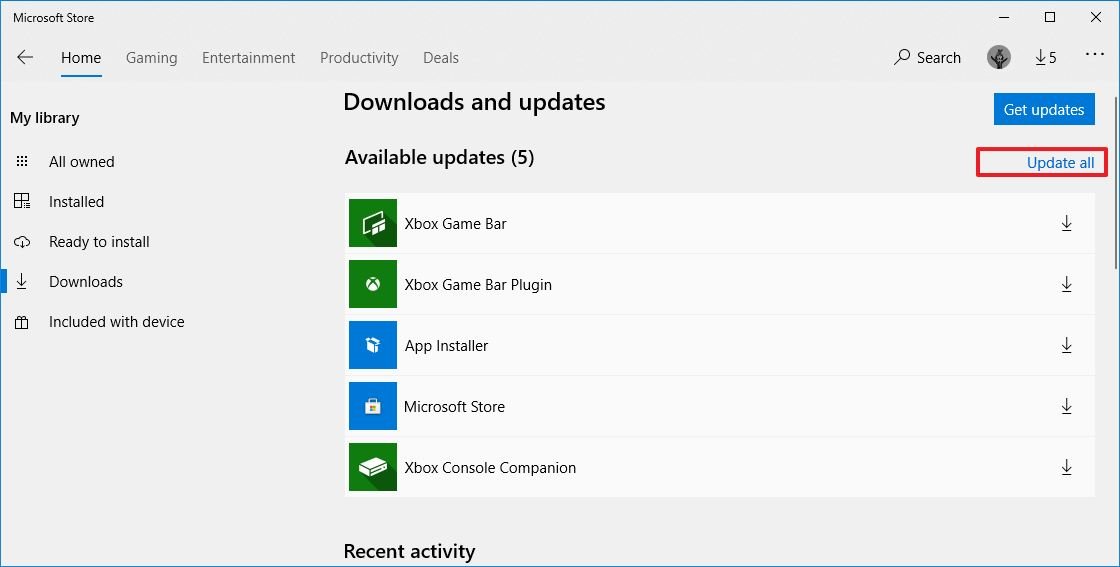
Source: Windows Central
Once you complete the steps, if updates are available, they will download and install automatically.
12. Switch to high performance power plan
Windows 10 includes different plans (Balanced, Power saver, and High performance) to optimize the power usage. If you want to boost the system performance, use the «High performance» option since it allows the device to use more power to operate faster.
To select a new power plan on Windows 10, use these steps:
Under the «Related settings» section, click the Additional power settings option.

Source: Windows Central
Select the High-performance power plan.
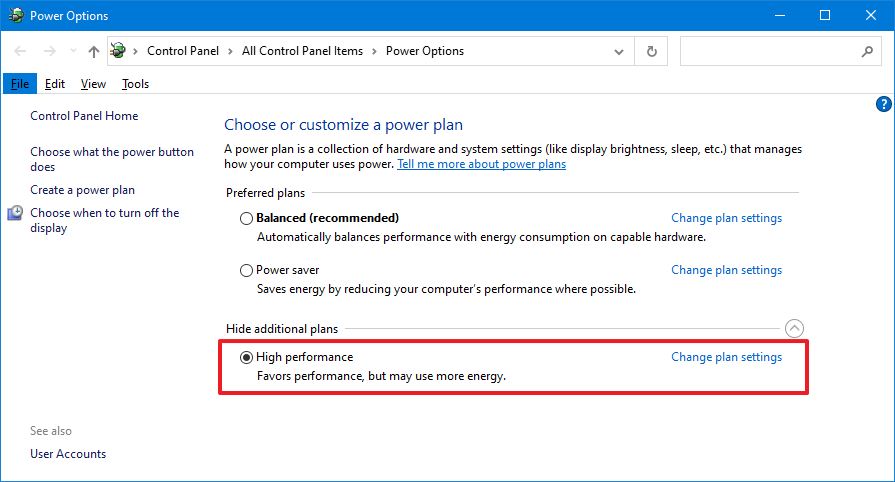
Source: Windows Central
If the power plan is not available, you may need to create a custom power plan to improve performance using the «High performance» settings.
On laptops, you can also change the «Power mode» to increase performance by tapping or clicking the battery icon in the taskbar’s notification area and selecting the Best performance option using the slider.
13. Disable system visual effects
On Windows 10, you will find many visual effects from animations to shadows to more advanced visuals elements, such as blur and transparency, reveal highlight, and part of the Fluent Design language.
Although these effects can make the experience more visually appealing, they also require system resources that can slow down computers with older hardware. However, you can disable these effects to save resources and make Windows 10 seem a little faster.
Disable visual effects
To disable animations, shadows, smooth fonts, and other effects on Windows 10, use these steps:
Under the «Related settings» section, click the Advanced system settings option from the right pane.
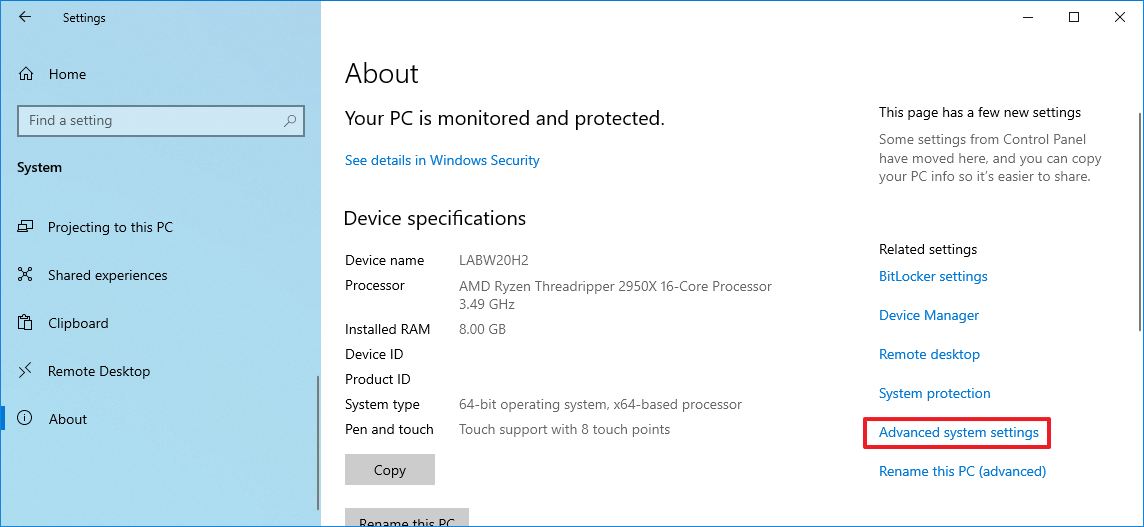
Source: Windows Central
Under the «Performance» section, click the Settings button.
Source: Windows Central
Select the Adjust for best performance option to disable all the effects and animations.
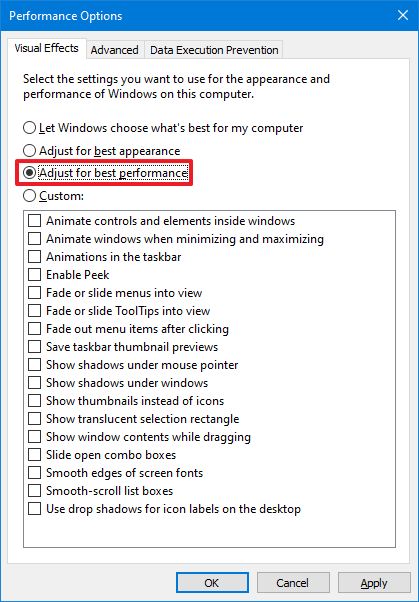
Source: Windows Central
Quick tip: Using this option will also affect the way fonts are rendered. If you want to keep fonts crisp and more readable, select the Custom option, clear all the settings, but leave the Smooth edges of screen fonts option checked.
Once you complete the steps, the visual effects will disable, and interacting with elements (windows and menus) will feel more responsive.
Disable transparency effects
To speed up Windows 10 disabling Fluent Design effects, use these steps:
Turn off the Transparency effects toggle switch.
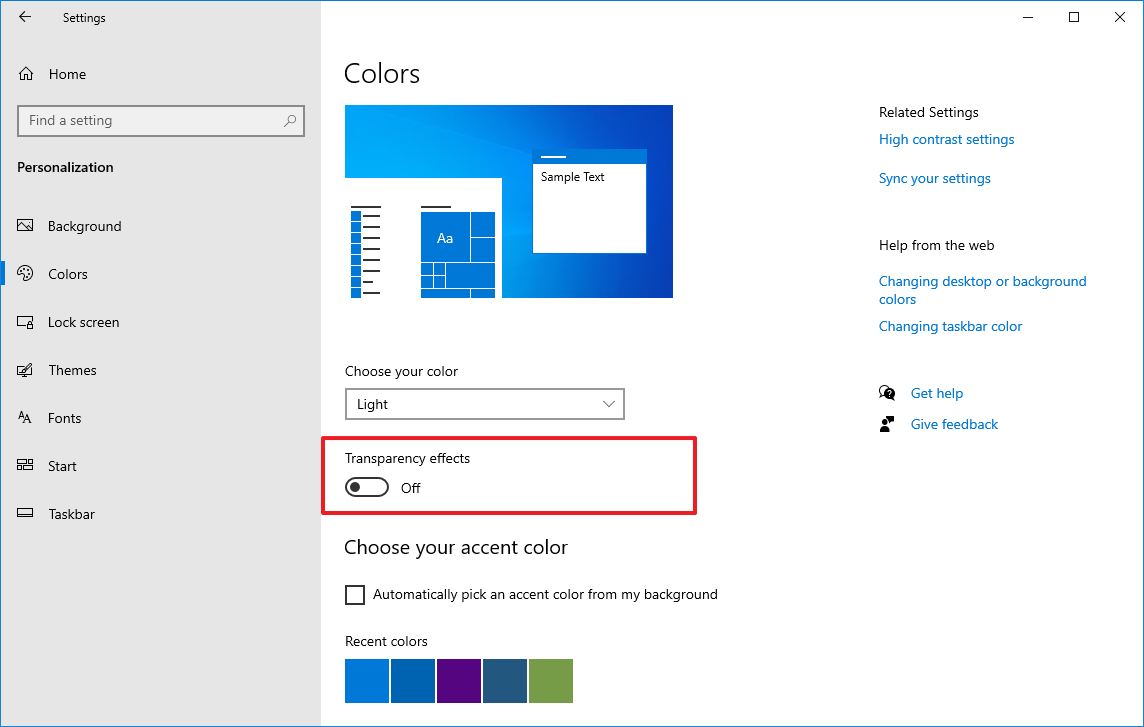
Source: Windows Central
After you complete the steps, Windows 10 will not only feel faster, but your device will free up some system resources for more important tasks.
14. Disable search indexing
Although Windows 10 search is an important feature to find apps, settings, and files, the indexing process can sometimes consume many resources that can negatively impact the experience – especially on low-end devices. If you keep your files organized, you can slow down the indexing process by excluding all search locations.
To configure the indexer to improve system performance on Windows 10, use these steps:
Under the «More Search Indexer Settings» section, click the Advanced Search Indexer Settings option.

Source: Windows Central
Click the Modify button.
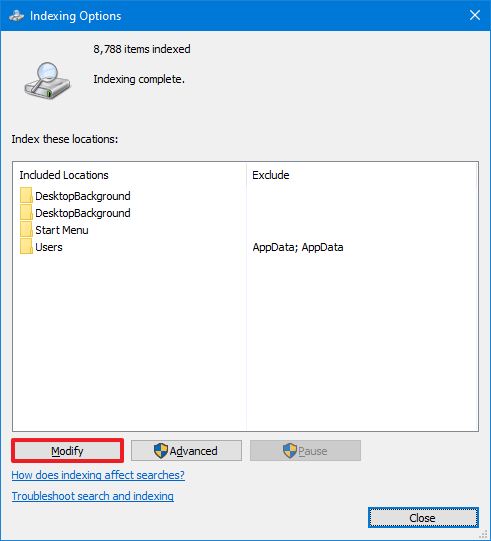
Source: Windows Central
Click the Show all locations button.
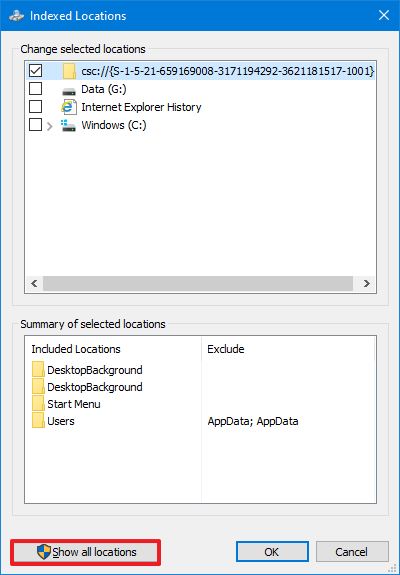
Source: Windows Central
Under the «Change selected locations» section, clear all the selected locations.
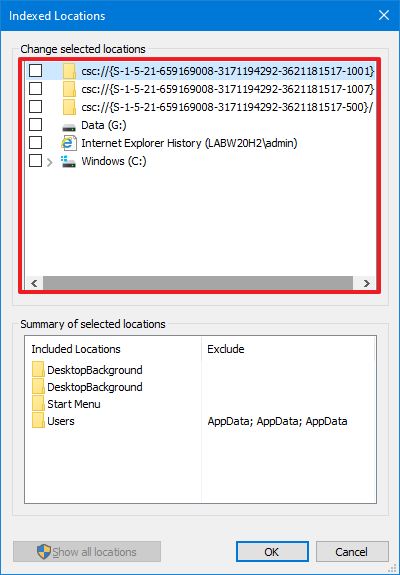
Source: Windows Central
Once you complete the steps, Windows Search will continue to run on your device, but Windows 10 will no longer index the specified locations, which should improve the overall performance.
15. Increase page file size
On Windows 10, the «page file» is a hidden file on the hard drive that works as memory, and it acts as an overflow of the system memory, which holds data for apps currently running on the device.
If you increase the size of the paging file, it can help to boost system performance.
To modify the page file to increase performance, use these steps:
Under the «Related settings» section, click the Advanced system settings option.

Source: Windows Central
Under the «Performance» section, click the Settings button.
Source: Windows Central
Under the «Virtual memory» section, click the Change button.
Source: Windows Central
Specify the initial and maximum size for the paging file in megabytes.
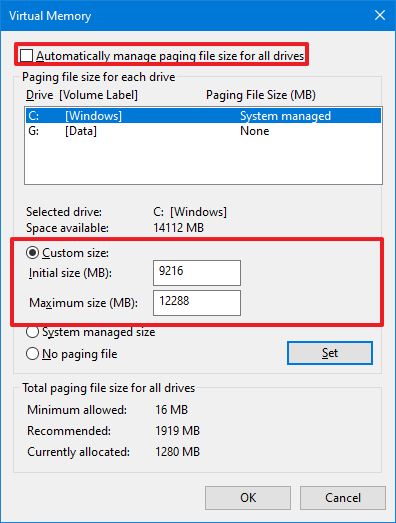
Source: Windows Central
Quick tip: Typically, it is recommended to use a number one and a half times the total available memory for the «Initial size» and three times of available memory for the «Maximum size» when possible. You can confirm the total amount of memory available on the About settings page.
After you complete the steps, the device will restart, and you should then notice a boost in performance while using apps. The performance will be more noticeable when configuring the page file in a Solid-State Drive.
If the new settings are causing issues or performance does not improve, you can always revert the changes with the same instructions outlined above. However, on step No. 9, make sure to select the System managed size option and check the Automatically manage paging files size for all drives option.
16. Restore previous working state
Sometimes your computer will begin to slow down after installing a new system update, device driver, or application. If you cannot determine why the device is slow, you can undo any changes by restoring the previous working state using a System Restore point.
To apply a restore point to fix performance issues on Windows 10, use these steps:
- Open Start.
- Search for Create a restore point and click the top result to open the System Properties app.
- Click the System Protection tab.
Click the System Restore button.
Source: Windows Central
Select the most recent restore point to resolve the performance issue.
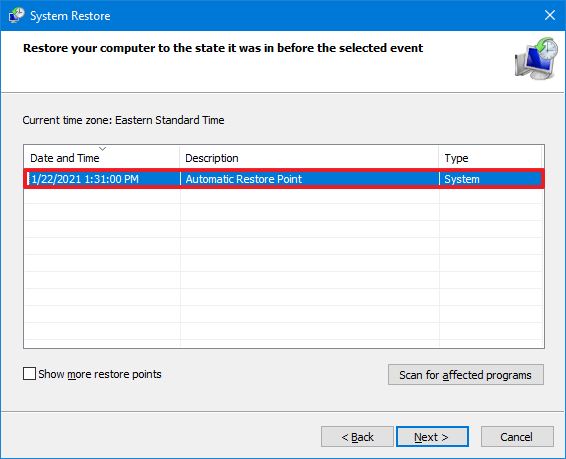
Source: Windows Central
Once you complete the steps, the computer will roll back to a previous state bringing back when performance was not an issue.
When applying a restore point, your files will be preserved, but the process will remove system changes, updates, drivers, and applications installed after the restore point was created.
System Restore is not enabled by default. This means you must set it up before you can revert system changes.
17. Repair Windows setup files
If the device shows signs of performance issues, it could be due to corrupted system files. If this is the case, you can use the Deployment Image Service and Management Tool (DISM) and System File Checker (SFC) command-line tools to fix the setup without reinstallation.
Fix installation files with DISM
To use DISM to repair corrupted system files to improve performance and stability on Windows 10, use these steps:
- Open Start.
- Search for Command Prompt, right-click the top result, and click the Run as Administrator option.
Type the following command to repair the installation and press Enter:
DISM /Online /Cleanup-image /Restorehealth
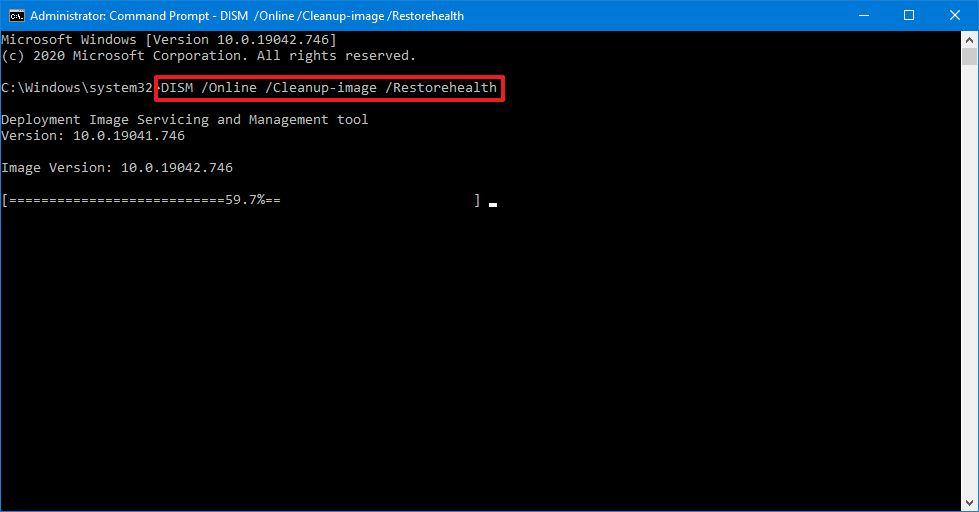
Source: Windows Central
After you complete the steps, the device should now operate normally if the utility is finished successfully. If the scan had issues, then you should also use the SFC command-line tool. (You can always learn more about this feature in our DISM walkthrough guide.)
Fix installation files with SFC
To use SFC to repair corrupted system files, use these steps:
- Open Start.
- Search for Command Prompt, right-click the top result, and click the Run as Administrator option.
Type the following command to repair the installation and press Enter:
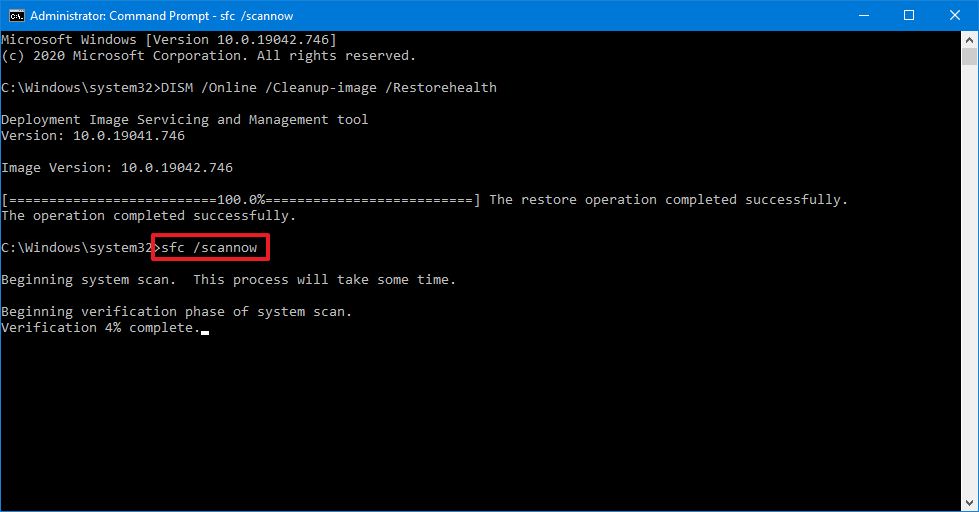
Source: Windows Central
Once you complete the steps, the tool should be able to fix any problem affecting performance.
You can check this guide with more details on using the System File Checker tool, including the steps to view scan details, repair individual files, and perform an offline system repair.
18. Reset device to factory defaults
Alternatively, you can also reset the computer to the factory default settings to start fresh with a clean copy of Windows 10 to improve startup and shutdown, battery life, and overall system performance.
Warning: If you choose to erase your files, you should consider creating a full backup or make a copy of your files to an external drive before proceeding.
To reset a device to its default settings, use these steps:
Under the «Reset this PC» section, click the Get started button.
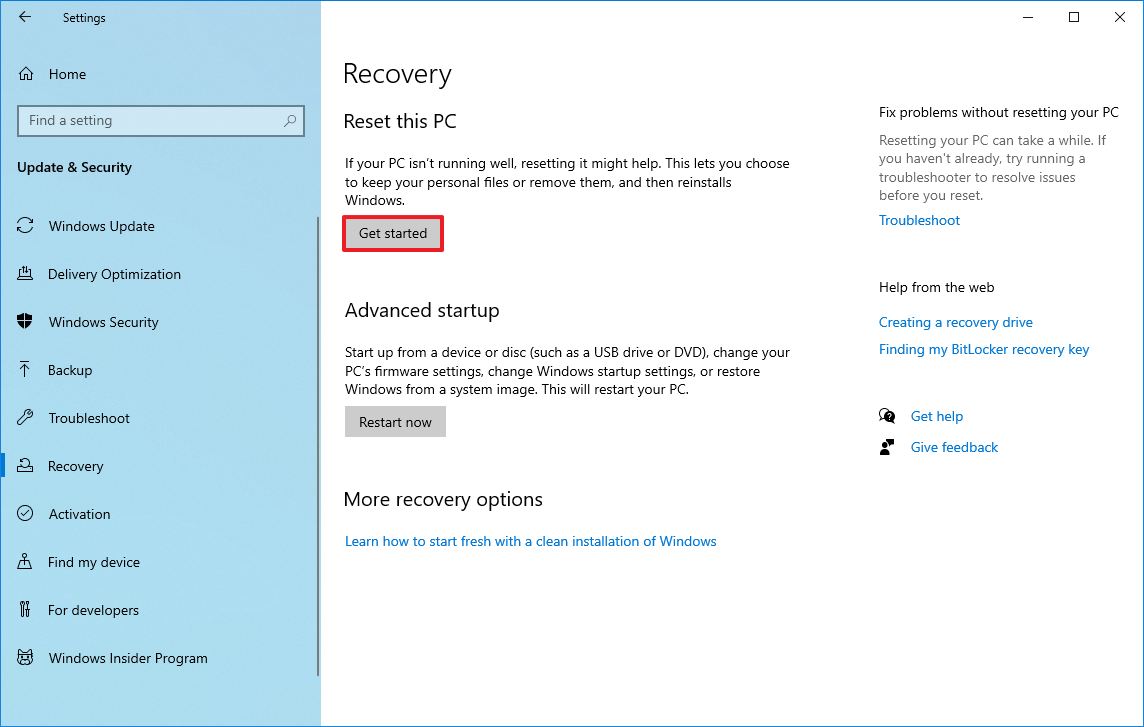
Source: Windows Central
Click the Keep my files button. (You can also click the Remove everything button to erase everything and install a clean copy of Windows 10.)
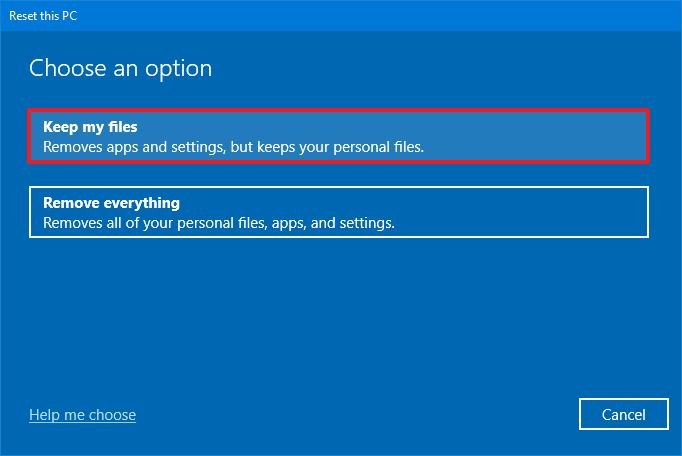
Source: Windows Central
Select the Local reisntall option.
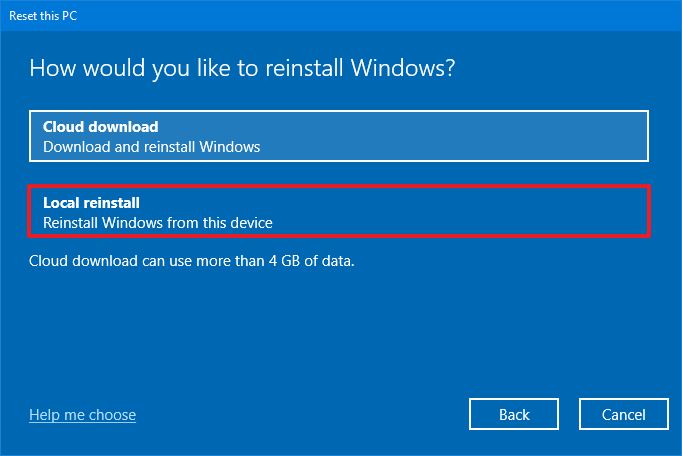
Source: Windows Central
Quick tip: If you want a clean installation of Windows 10 without the apps that came pre-installed with the device or if the Local reinstall option does not work, select the Cloud download option.
Click the Reset button.

Source: Windows Central
After you complete the steps, Windows 10 will be reinstalled, removing previous configurations, settings, and apps to help you boost system performance. If you selected the option to remove everything, remember to restore your files from a previous backup after the process.
If you are looking to install Windows 10 from scratch, check out our in-depth guide to perform a clean installation.
19. Upgrade to faster drive
If, even after going through the reset process, you are not noticing performance improvements, then it might be time to upgrade the hard drive to an SSD.
Upgrading to a Solid-State Drive is perhaps one of the best ways to increase performance on older hardware. Usually, it’s because SSDs do not have moving parts like traditional hard drives, which means data can be read and written a lot faster.
When you replace an HDD with an SSD, Windows 10 will boots noticeable faster, apps will launch and run quicker, and the overall performance will be snappier and faster.

Source: Windows Central
If you plan to upgrade to an SSD, we recommend the Samsung 860 EVO because of its fast performance, reliability, and five-year warranty.
Blazing speeds
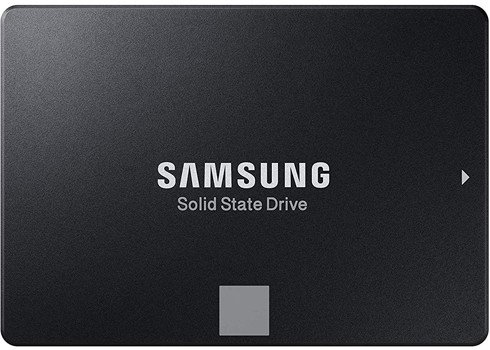
Samsung 860 EVO
The Samsung 860 EVO is one of the most popular Solid-State Drives (SSD) because of its reliability and price. It also offers excellent performance (with up to 550MB/s read and 520MB/s write speeds) compared to traditional hard drives, and every drive is backed with a five-year warranty.
20. Upgrade system memory
Insufficient system memory can also be why your desktop or laptop is running slow, especially if you work with multiple apps and many open tabs in the web browser.
If you want to determine whether your computer needs more memory, you first need to find out the total amount of memory installed on the device and how the system is using it.
To view the total amount and current memory usage, use these steps:
- Open Start.
- Search for Task Manager, and click the top result to open the app.
- Click the Performance tab.
- Click on Memory from the left pane.
On the right, check the total amount of RAM in the top-right corner, and in the bottom-left corner, under «In use (Compressed),» you can find the out total amount of memory currently in use.

Source: Windows Central
If the total amount of «in use» memory is constantly high (around 80 percent), then it’s time to add memory sticks.
Although the process to add more memory is relatively straightforward, finding a compatible kit can be tricky. Always remember to use Task Manager to find out the type of memory you need and if there are any slots available. It is also recommended to check your device manufacturer’s website to find more specific information about the memory requirements.
More Windows 10 resources
For more helpful articles, coverage, and answers to common questions about Windows 10, visit the following resources:
We may earn a commission for purchases using our links. Learn more.

Buyer’s guide
These are the best laptops with a removable battery
There aren’t many laptops left with removable batteries, but we did find some that might interest you. We also lay out some alternative methods to keep your battery going when you’re not near an AC outlet.

New Game Pass
All the Xbox Game Pass games coming and leaving soon
Xbox Game Pass is constantly evolving with new games joining the service all the time. Keep track of everything coming and going from Xbox Game Pass with our comprehensive guide.

It’s what the community wants
Battlefield 2042 seems to be finally embracing the series’ goofiness
Many of the older Battlefield games had incredible potential for silly strategies, but this trend didn’t continue with the likes of Battlefield 1 and Battlefield 5. Thankfully, it looks like the developers are embracing goofiness with Battlefield 2042.

Touchdown!
The NFL is back! Check out these must-have Windows apps for football fans
After months of waiting through the offseason, the NFL is finally back this week. With these Windows 10 apps, you won’t miss a snap of the NFL action.
Optimize Windows 10 Performance by tweaking Visual Effects
Windows 10 is the most optimized and fastest OS provided by them, there will always be tweak enthusiasts and power users who want to squeeze out the last drop of performance to make Windows 10 run faster. Windows 10 too offers some visual effects, animations, and features can be disabled to improve its performance – similar to what was being offered in Windows 8/7.
Today in this article, we’re going to talk about the visual performance optimization of Windows 10/8.
Disable visual effects in Windows 10
1. Press Windows Key + X combination to see the following menu. Select System in the bottom left corner.
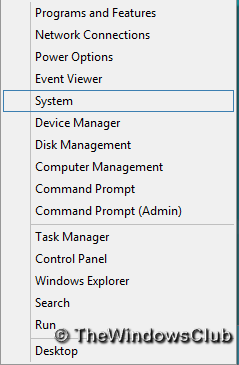
2. In the System window, in the left pane, click on Advanced system settings.
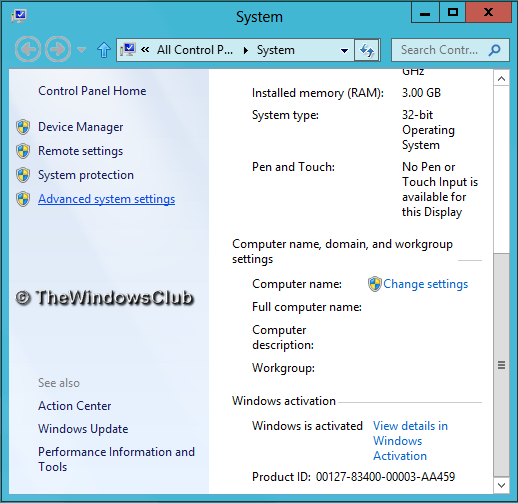
3. In the System Properties window, pick Settings for Performance.
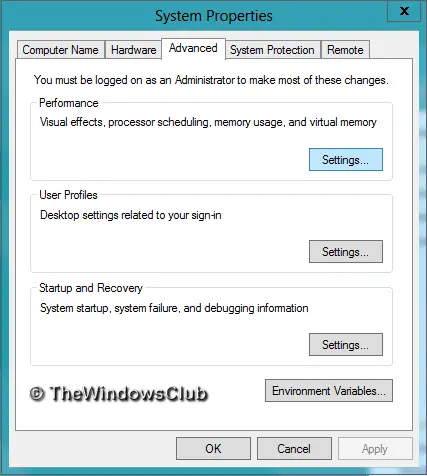
4. In the Performance Options window, you will see 3 options:
- Let Windows choose what’s best for my computer
- Adjust for best appearance
- Adjust for best performance.
Selecting Adjust for best performance may make your Windows perform slightly better, but you will have to sacrifice on the visual effect – and that maybe something you may not want to do.
Here are the settings I prefer to uncheck. Feel free to change them and make them suit your needs.
- Fade out menu items after clicking
- Enable transparent glass (you will lose the cool Aero look though)
- Animations in the taskbar
- Fade or slide menus into view
- Fade or slide Tool Tips into view
- Animate windows when minimizing and maximizing
- Show shadows under windows
- Slide open combo boxes
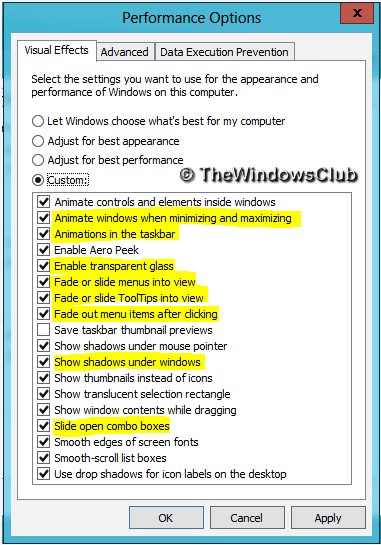
Finally, click Apply and then OK. Now you could access to Desktop, if you like using Windows + D key combination.
You’ll now see that performance of your Windows 10 may have increased marginally.
You also have another way and that is as follows:
Open Control Panel > Ease of Access > Make the computer easier to see.
Here you will see a Turn off all unnecessary animations (when possible) setting. Check the box and click Apply.
This setting is, of course, available in Windows 8/7 too!
See this post if you frequently receive 100% Disk Usage message.
Date: April 20, 2019 Tags: Performance
Related Posts
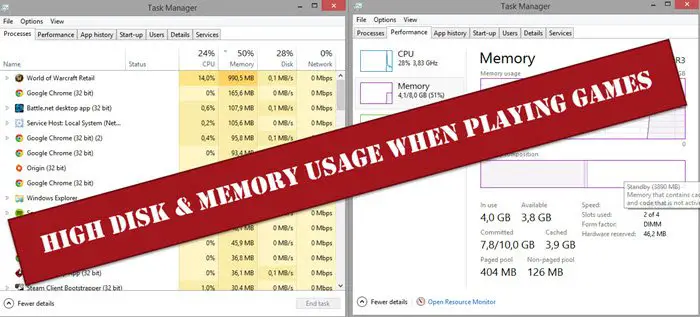
Fix High Disk & Memory Usage when playing Games on Windows 11/10

Fix Malwarebytes high CPU and Memory usage on Windows 11/10
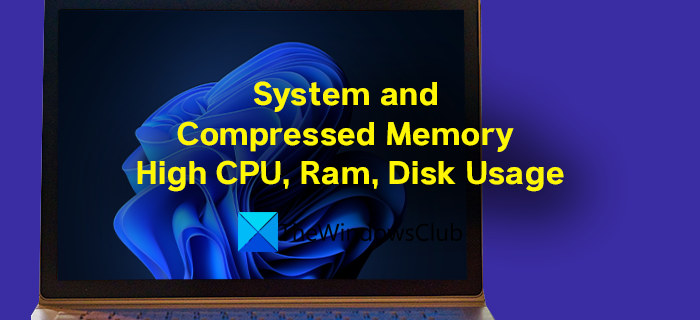
Fix System and Compressed Memory High CPU, Ram, Disk Usage on Windows 11/10
[email protected]
An Electrical Engineer by profession, Kapil is a Microsoft MVP and a Microsoft Content Creator. Please read the entire post & the comments first & create a system restore point before making any changes to your system.
https://www.lifewire.com/adjust-visual-effects-to-improve-speed-3506867
https://www.windowscentral.com/tips-tricks-increase-pc-performance-windows-10
https://www.thewindowsclub.com/disable-visual-effects-windows